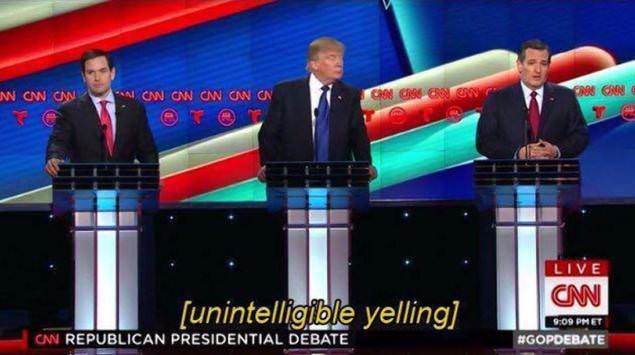Closed Captioning Snips Are Usually Edited
While funny closed captioning screenshots give many people a good chuckle while scrolling through their Twitter feed, it’s important to realize that some, or even most, of these photos are in fact, fake.
How do we know?
It’s standard practice here at VITAC to not imply or interject any sort of opinion into our captions. It’s our job to present information verbatim in offline captioning, and as verbatim as possible with realtime captioning.
For example:

This photo made its Internet rounds shortly after a Republican Primary debate. There were even articles about with headlines such as “Closed Captioner Fed Up”.
“We’re very careful not to ever kind of insert our judgment or any of our opinion, so if we have to put up a parenthetical, it would be something like ‘overlapping speakers’ or maybe ‘inaudible.’ We’d never write ‘unintelligible.’ We just wouldn’t do that,” said our very own Manager of Realtime Captioner Training, Amy Bowlen on WNYC’s The Takeaway.
And while captioning does have to get rather creative and descriptive for sound effects and music, it’s not our job to provide commentary.
A captioner’s job is to write what is being said. This photo was most likely edited with the text added in.
So next time you see an online article pointing out the “most hilarious” closed captioning moments, realize that at VITAC, our captioners may have had to get imaginative with their descriptions of sound, or in the case of realtime captioning, point out that speakers were overlapping or inaudible, but never insert their own judgments or beliefs into programming.



